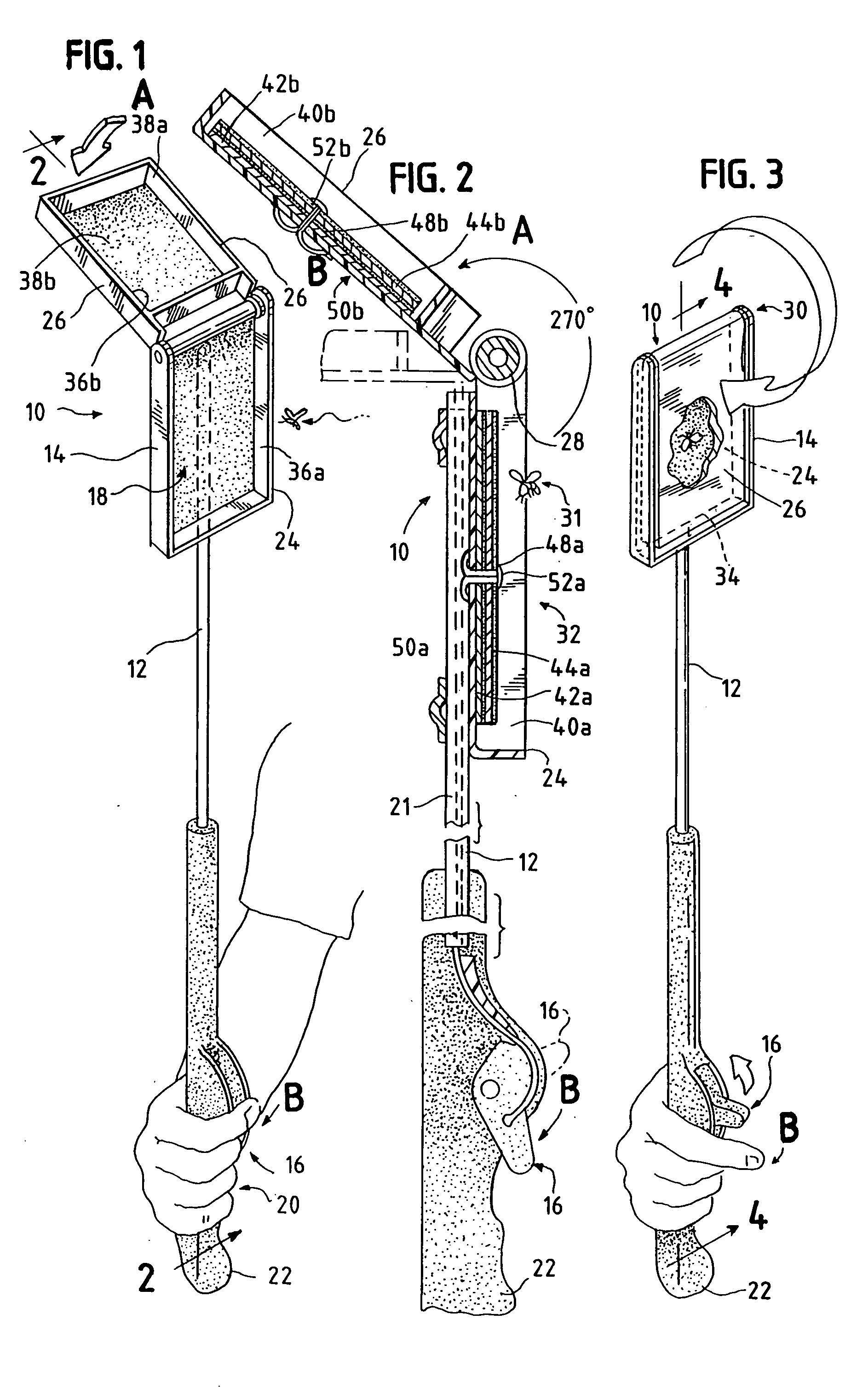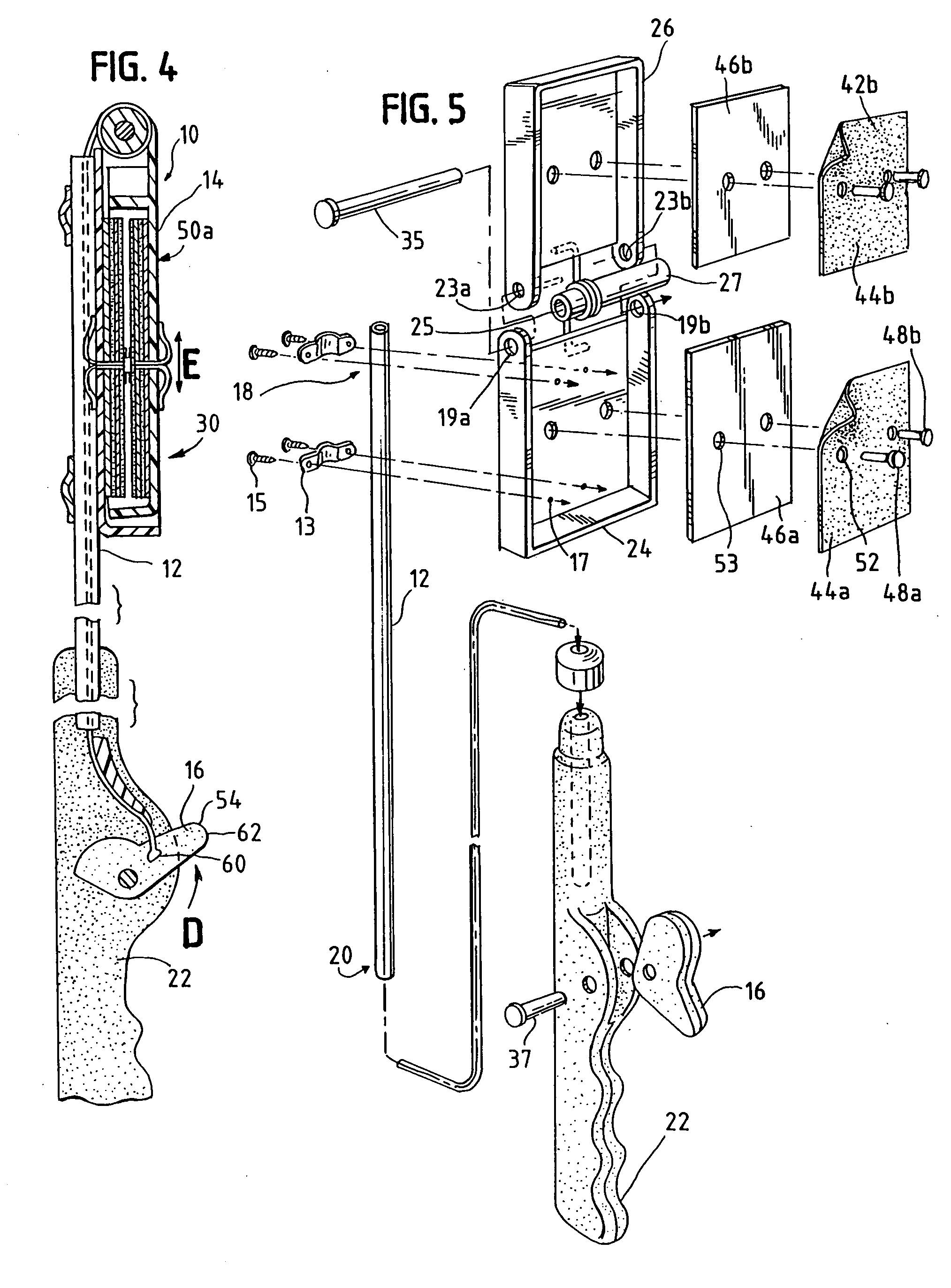Device for catching insects
- Summary
- Abstract
- Description
- Claims
- Application Information
AI Technical Summary
Benefits of technology
Problems solved by technology
Method used
Image
Examples
Embodiment Construction
[0025] While this invention is susceptible of embodiment in many different forms, there is shown in the drawings and described in detail herein, several specific embodiments with the understanding that the present disclosure is to be considered as exemplifications of the principles of the invention and is not intended to limit the invention to the embodiments illustrated.
[0026] Now referring to the drawings, a device 10 for catching insects in accordance with the present invention is shown generally in FIG. 1 as including an elongated member 12, an insect trapping head 14, and an actuating mechanism 16. Elongated member 12 has a first distal portion 18 and a second distal portion 20. Typically, as shown in FIG. 2, elongated member 12 comprises an elongated rod having a bore 21. Elongated member 12 may be formed from aluminum, steel, durable plastic, or any other relatively rigid material, and is preferably about 24 inches in length. Preferably, elongated member 12 includes a handle...
PUM
 Login to View More
Login to View More Abstract
Description
Claims
Application Information
 Login to View More
Login to View More - R&D
- Intellectual Property
- Life Sciences
- Materials
- Tech Scout
- Unparalleled Data Quality
- Higher Quality Content
- 60% Fewer Hallucinations
Browse by: Latest US Patents, China's latest patents, Technical Efficacy Thesaurus, Application Domain, Technology Topic, Popular Technical Reports.
© 2025 PatSnap. All rights reserved.Legal|Privacy policy|Modern Slavery Act Transparency Statement|Sitemap|About US| Contact US: help@patsnap.com



